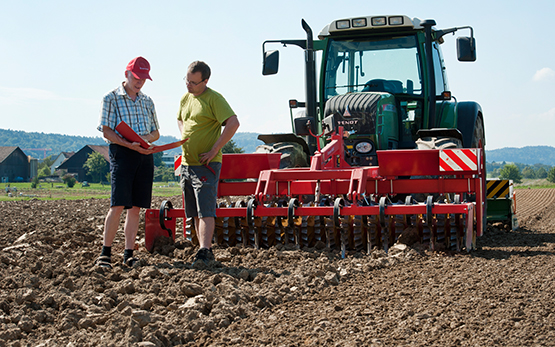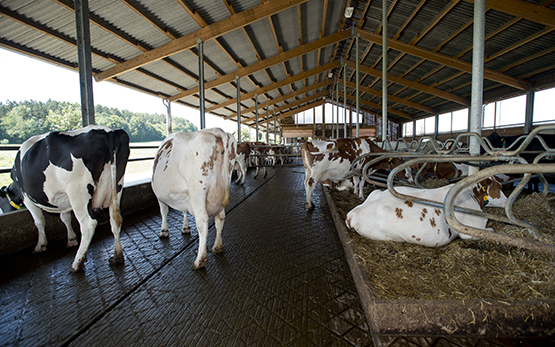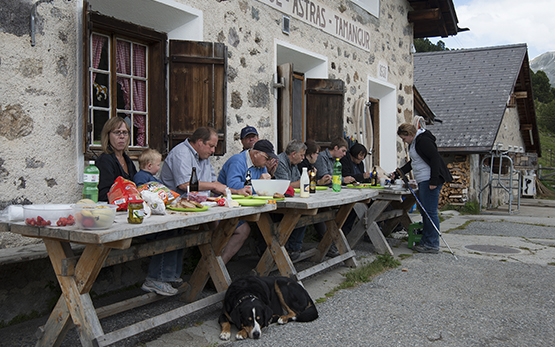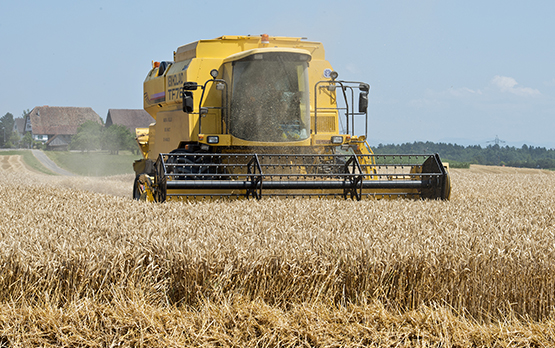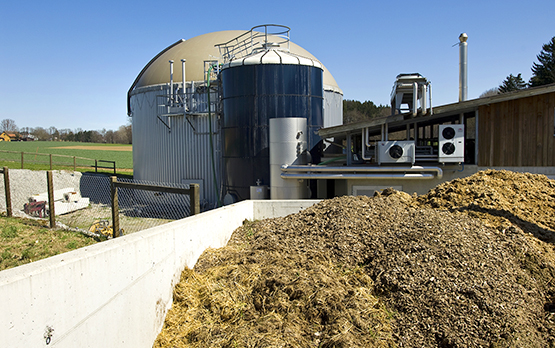Kartakis S., Horrocks K., Cingiz K., Kriticos D. J., Wesseler J.
Migration extent and potential economic impact of the fall armyworm in Europe.
Scientific Reports, 15, 2025, Article 17405.
Zannou A. J., Arnó J., Romeis J., Collatz J.
Compatibility of biocontrol agents with host plant resistance for management of the South American tomato pinworm Phthorimaea absoluta.
Biological Control, 205, 2025, Article 105772.
Wyckhuys K. A. G., Abram P. K., Barrios E., Cancino J., Collatz J., Fancelli M., Klein A.-M., Lindell C. A., Osterman J., Pinto M., Tang F. H. M., Tena A., Elkahky M.
Orchard systems offer low-hanging fruit for low-carbon, biodiversity-friendly farming.
BioScience, In Press, 2025.
Gallego Nogales I., Medic N., Pedersen J. S., Ramasamy P. K., Robbens J., Vereecke E., Romeis J.
The microalgal sector in Europe: Towards a sustainable bioeconomy.
New Biotechnology, 86, 2025.
Gallego Nogales I.
Biocompounds of commercial interest from freshwater and marine phytoplankton.
Dans: The Role of Plankton in Freshwater and Marine Ecology. Ed. IntechOpen. 2025, 1-23.
Zannou A. J., Romeis J., Collatz J.
Response of the tomato leaf miner Phthorimaea absoluta to wild and domesticated tomato genotypes.
Pest Management Science, 81, (3), 2025, 1345-1359.
Rondoni G., Collatz J., Jonsson M., Rubbmark O.R., Riddick E.W., Schmidt J.M., Brodeur J.
Recent advances in characterizing trophic connections in biological control.
Biological Control, 199, 2024, Article 105656.
Horrocks K., Seehausen M.L., Down R.E., Audsley N., Maggini R., Collatz J.
Assessing the feasibility of pre-emptive biological control against the emerald ash borer, Agrilus planipennis, an imminent biosecurity threat to Europe.
Biological Control, 198, 2024, 1-15.
Zannou A. J., Romeis J., Collatz J.
Understanding the interplay of tomato genotypes, Tuta absoluta and natural enemies.
Dans: Symposium on Insect Plant Relationships 2024. 4. August, Bielefeld. 2024.
Duarte Martínez L., Bueno V. H. P., Baños Diaz H. L., Collatz J., de los Ángeles Martinez Rivero M., Maluf R. W., Oliveira A., Rivas Diéguez A., Sánchez Castro A., Rodríguez Morell H.
Bases científicas y metodológicas para la detección temprana y respuesta rápida a Tuta absoluta (Meyrick) (Lepidoptera: Gelechiidae) en Cuba.
Anales de la Academia de Ciencias de Cuba, 14, (2), 2024, 1-12.
Meissle M., Grabenweger G., Romeis J.
No interaction of fluctuating or constant temperature and virulence of entomopathogenic fungi in two noctuid species.
Journal of Pest Science, 97, (2), 2024, 809-823.
Meissle M.
Prey-mediated effects of Mpp51Aa2-producing cotton on longevity and reproduction of Orius majusculus.
Transgenic Research, 33, (3), 2024, 75-88.
Kümin M., Eyer K., Hall J., Koch A., Pascolo S., Romeis J.
RNA-Technologien: Wirkmechanismen, Anwendungen und Verabreichungsformen.
Swiss Academies Reports, 19, (1), 2024, 1-56.
autres langues:
anglais
Zina V., Conde S., Branco M., Franco J.C.
Do dominant native ants outcompete the invasive Argentine Ant in Mediterranean citrus ecosystems ?: A laboratory test.
Insects, 15, 2024, 1-15.
Gilliéron F., Romeis J., Collatz J.
Cold tolerance of the mealybug parasitoid Anagyrus vladimiri.
BioControl, 69, 2024, 129-143.
Horrocks K., Zhang J., Haye T., Seehausen L., Maggini R., Xian X., Chen J., Nugnes F., Collatz J., Gruber A., Gariepy T.
Biology, impact, management and potential distribution of Aromia bungii, a major threat to fruit crops around the world.
Journal of Pest Science, 97, 2024, 1725-1747.
Gonthier J., Arno J., Romeis J., Collatz J.
Insight into the host-specificity of a native and a newly introduced parasitoid of Tuta absoluta and prospect for biological control.
Biological Control, 191, 2024, 1-10.
Meissle M., Chen Y., Romeis J.
Daphnia magna as an indicator for aquatic species in the non-target risk assessment of genetically modified maize.
Dans: SETAC Europe 34th Annual Meeting. 6. May, Sevilla (ES). 2024.
Purnhagen K., Ambrogio Y., Bartsch D., Eriksson D., Jorasch P., Kahrmann J., Kardung M., Molitorisova A., Monaco A., Nanda A.K., Romeis J., Rostoks N., Unkel K., Schneider X.T.
Options for regulating new genomic techniques for plants in the European Union.
Nature Plants, 9, 2023, 1958-1961.
Chen Y., Meissle M., Xue J., Zhang N., Ma S., Guo A., Liu B., Peng Y., Song X., Yang Y., Li Y.
Expression of Cry1Ab/2Aj protein in genetically engineered maize plants and its transfer in the arthropod food web.
Plants, 12, (23), 2023, 1-13.
Avila G. A., Seehausen L. M., Lesieur V., Chhagan A., Caron V., Down R. E., Audsley N., Collatz J., Bukovinszki T., Sabbatini Peverini G., Tanner R., Maggini R., Milonas P., McGee C. F., Horrocks K. et autres
Guidelines and framework to assess the feasibility of starting pre-emptive risk assessment of classical biological control agents.
Biological Control, 187, 2023, 1-14.
Koller J. S., Sutter L., Gonthier J., Collatz J., Norgrove L.
Entomopathogens and Parasitoids allied in biocontrol: A systematic review.
Pathogens, 12, (7), 2023, 1-17.
Gonthier J., Koller J. S., Arnò J., Collatz J., Sutter L.
Models for the practitioner: Predicting the efficient biocontrol of Tuta absoluta under different management scenarios.
Crop Protection, 172, 2023, 1-8.
Boss A., Romeis J., Meissle M.
Prey-mediated effects of mCry51Aa2-producing cotton on the predatory nontarget bug Orius majusculus (Reuter).
Insects, 30, (4), 2023, 1191-1206.
Wolf S., Collatz J., Enkerli J., Widmer F., Romeis J.
Assessing potential hybridization between a hypothetical gene drive-modified Drosophila suzukii and nontarget Drosophila species.
Risk Analysis, 43, (10), 2023, 1921-1932.
Martinez L. D., Romeis J., Collatz J.
Effect of simulated heat waves on the behavior of two mirid predators.
Journal of Applied Entomology, 147, (7), 2023, 486-498.
Meissle M., Waldburger M., Jeanneret P., Broggini G., Patocchi A., Romeis J.
Insect pollinator monitoring in and around a netted plot of apple trees: Biosafety implications for genetically engineered fruit trees.
Agronomy, 13, (84), 2023.
Romeis J.
Assessing the hybridization potential between a hypothetical gene drive-modified insect strain and related non-target species.
Dans: 16th ISBR Symposium. 02 May, St Louis, MO, USA. 2023.
Meissle M., Romeis J., Naranjo S.E.
Bt maize and non-target animals: A systematic review.
Dans: IOBC-WPRS Proceedings of the ninth meeting. 28-30 September, Ed. IOBC-WPRS, Berlin. 2023, 69-75.
Meissle M., Middelhoff U., Bartsch D.
Working group modern Biotechnology in integrated plant production: Proceedings of the ninth meeting at Berlin, Germany, 28-30 September, 2022.
IOBC-WPRS, Berlin. 2023, 132 pp.
Gonthier J., Arnó J., Romeis J., Collatz J.
Few indirect effects of baculovirus on parasitoids demonstrate high compatibility of biocontrol methods against Tuta absoluta.
Pest Management Science, 79, (4), 2023, 1431-1441.
Connolly J. B., Romeis J., Devos Y., Glandorf D. C. M., Turner G., Coulibaly M. B.
Gene drive in species complexes: Defining target organisms.
Trends in Biotechnology, 41, (2), 2023, 154-164.
Gonthier J., Zhang, Y., Zhang, G., Romeis J., Collatz J.
Odor learning improves efficacy of egg parasitoids as biocontrol agents against Tuta absoluta.
Journal of Pest Science, 96, 2023, 105-117.
Tonui W. K., Ahuja V., Beech C. J., Connolly J. B., Dass B., Glandorf D. C. M., James S., Muchiri J. N., Mugoya C. F., Okoree E. A., Quemada H., Romeis J.
Points to consider in seeking biosafety approval for research, testing, and environmental release of experimental genetically modified biocontrol products during research and development.
Transgenic Research, 31, 2022, 607-623.
Meissle M.
How to combine innovation and precaution towards more sustainable agriculture: Considerations for a new way forward.
Dans: IOBC-WPRS Proceedings of the ninth meeting. 28-30 September, Ed. IOBC-WPRS, Berlin. 2022, 61-68.
Meissle M., Naranjo S. E., Romeis J.
Database of non-target invertebrates recorded in field experiments of genetically engineered Bt maize and corresponding non-Bt maize.
BMC Research Notes, 15, 2022, Article 199.
Connolly J. B., Mumford J. D., Glandorf D. C. M., Hartley S., Lewis O. T., Evans S. W., Turner G., Beech C., Sykes N., Coulibaly M. B., Romeis J., Teem J. L., Tonui W., Lovett B., Mankad A. et autres
Recommendations for environmental risk assessment of gene drive applications for malaria vector control.
Malaria Journal, 21, 2022, 1-13.
Wang Y., Liu Q., Song X., Xiaowei Y., Han L., Romeis J., Li Y.
Unintended changes in transgenic maize cause no nontarget effects.
Plants, People, Planet, 4, (4), 2022, 392-402.
Meissle M., Naranjo S. E., Romeis J.
Does the growing of Bt maize change abundance or ecological function of non-target animals compared to the growing of non-GM maize? A systematic review.
Environmental Evidence, 11, 2022, 1-36.
Häner N., Amiresmaeili N., Stähli N., Romeis J., Collatz J.
Overwintering of two pupal parasitoids of Drosophila under natural conditions.
Journal of Thermal Biology, 106, 2022, 1-12.
Kapranas, A., Collatz J., Michaelakis, A., Milonas, P.
Review of the role of sterile insect technique within biologically-based pest control: An appraisal of existing regulatory frameworks.
Entomologia Experimentalis et Applicata, 170, (5), 2022, 385-393.
Chen Y., Romeis J., Meissle M.
No adverse effects of stacked Bacillus thuringiensis maize on the midge Chironomus riparius.
Environmental Toxicology and Chemistry, 41, (4), 2022, 1078-1088.
Zhang Y., Tian X., Wang H., Casteňé C., Arnó J., Collatz J., Romeis J., Wu S., Xian X., Liu W., Wan F., Zhang G.
Host selection behavior of the host-feeding parasitoid Necremnus tutae on Tuta absoluta.
Entomologia Generalis, online, (29 October), 2022, 1-12.
Collatz J., Siffert A., Cahenzli F., Kehrli P.
Les prédateurs de la Drosophile du cerisier.
Vignes et Vergers, 1, 2022, 8-11.


